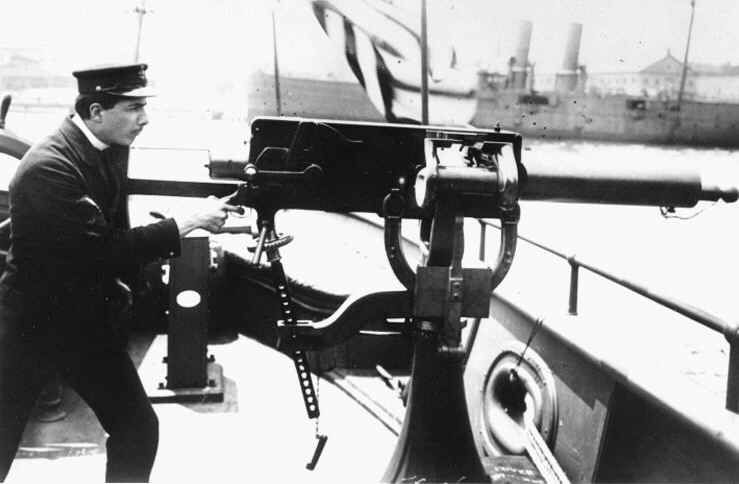
1-pdr. guns were in use by many nations at the end of the 1890s, including the United States of America. The list of 1-pdr. guns that served in the USN is something of a jumble, as several manufacturers built weapons of this type which were adopted by the USN and the USN built their own types. As the USN assigned its own Mark and Mod numbers to these weapons which rarely matched the Mark and Mod numbers assigned by the manufacturers and which were embossed on the weapons, there is always confusion as to which gun a Mark number is describing.
The earliest of these weapons was the Sponsell Gun, manufactured by Pratt and Whitney, which had a vertically sliding breech block. No Mark number was assigned to this gun. Mark 1 was the Hotchkiss light, short Mark 1 gun on a non-recoil mount. Mark 1 Mod 1 was the Hotchkiss light, long Mark 2 gun on a recoil mount. Both of these Mark 1 guns were produced in different lengths, making it difficult to assess performance.
Mark 2 was a Driggs-Schroeder heavy Mark 1. Mark 3 was the Hotchkiss heavy, long Mark 1 gun. Mark 4 was the Driggs-Schroeder heavy, long Mark 2. Mark 5 was the Hotchkiss heavy Mark 2.
Mark 6 was the heavy machine cannon which was used as an anti-aircraft gun during World War I. It was originally the Maxim-Nordenfeldt heavy, automatic Mark 1 and entered service just before the Spanish-American War. This gun used a water-jacket. Mark 7 was similar but had a shorter barrel.
Mark 8 was the Hotchkiss heavy, semi-automatic Mark 3. Mark 9 was the Maxim-Nordenfeldt light, automatic Mark 1. Mark 10 was a rapid-fire aircraft gun with a Hotchkiss-type breech. Mark 11 was a Hotchkiss-type line-throwing gun. Mark 12 was a monobloc gun with a Driggs sliding and rotating drop breech block. Mark 13 a Mark 5 with monobloc rather than built-up construction. Mark 14 was a Baldwin design manufactured by Poole during World War I and was an automatic gun with a flexible mount. The Mark 15 was similar but used a much larger cartridge for a higher muzzle velocity.
Many automatic guns were remounted as anti-aircraft weapons during World War I.
The data that follows is specifically for the Hotchkiss 40 gun unless otherwise noted.
| Designation | 1-pdr. (0.45 kg) [1.46" (37 mm)]
Sponsell Gun: 40 calibers
|
|---|---|
| Ship Class Used On | Many |
| Date Of Design | about 1885 |
| Date In Service | 1886 |
| Gun Weight | N/A |
| Gun Length oa | N/A |
| Bore Length | N/A |
| Rifling Length | N/A |
| Grooves | N/A |
| Twist | Mark 5: RH 1 in 30
Others: N/A |
| Length Of Rifling | N/A |
| Chamber Volume | N/A |
| Rate Of Fire | Semi-automatic: 25 rounds per minute |
| Type | Fixed |
|---|---|
| Weight of Complete Round | about 1.62 lbs. (0.7 kg) |
| Projectile Types and Weights | HE: 1.058 lbs. (0.48 kg)
Common Mark 2 Mods 0 and 1: 1.088 lbs. (0.49 kg) |
| Bursting Charge 1 | HE: N/A
Common Mark 2: 0.026 lbs. (0.012 kg) Black Powder |
| Projectile Length | HE: N/A
Common Mark 2: 3.56 in (9.0 cm) |
| Cartridge Case Type, Size and Empty Weight | Mark 2: Brass, 37 x 137 mm, 0.406 lbs. (0.18 kg) |
| Propellant Charge | 0.15 lbs. (0.070 kg) NC |
| Muzzle Velocity | Light guns: 1,500 fps (457 mps)
Heavy guns: 2,000 fps (610 mps) Mark 15, only: 3,000 fps (914 mps) |
| Working Pressure | N/A |
| Approximate Barrel Life | N/A |
| Ammunition stowage per gun | N/A |
- ^Some Common rounds used a burster mixture of Black Powder and TNT.
- Bourrelet diameter was 1.445 inches (3.67 cm).
| Elevation | Distance | Strking Velocity | Angle of Fall | Time of Flight |
|---|---|---|---|---|
| 1.4 degrees | 1,000 yards (910 m) | 1,007 fps (307 mps) | 2.0 | 2.2 seconds |
| 4.0 degrees | 2,000 yards (1,830 m) | 740 fps (226 mps) | 6.9 | 5.8 seconds |
| 8.4 degrees | 3,000 yards (2,740 m) | 576 fps (176 mps) | 16.0 | 10.5 seconds |
| 11.4 degrees | 3,500 yards (3,200 m) | 519 fps (158 mps) | 22.7 | 13.5 seconds |
| Designation | N/A |
|---|---|
| Weight | N/A |
| Elevation | N/A |
| Elevation Rate | Manually operated, only |
| Train | 360 degrees |
| Train Rate | Manually operated, only |
| Gun recoil | N/A |
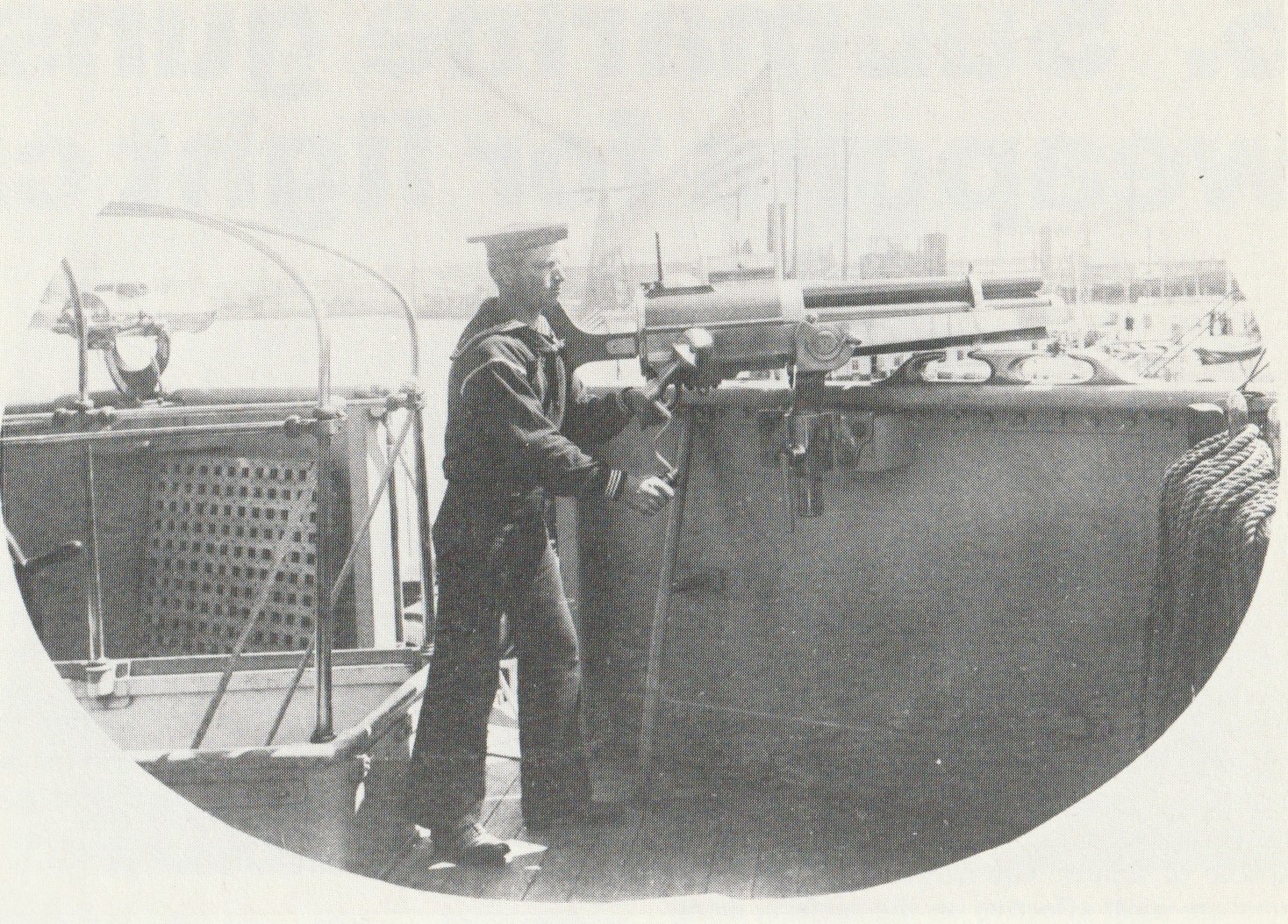
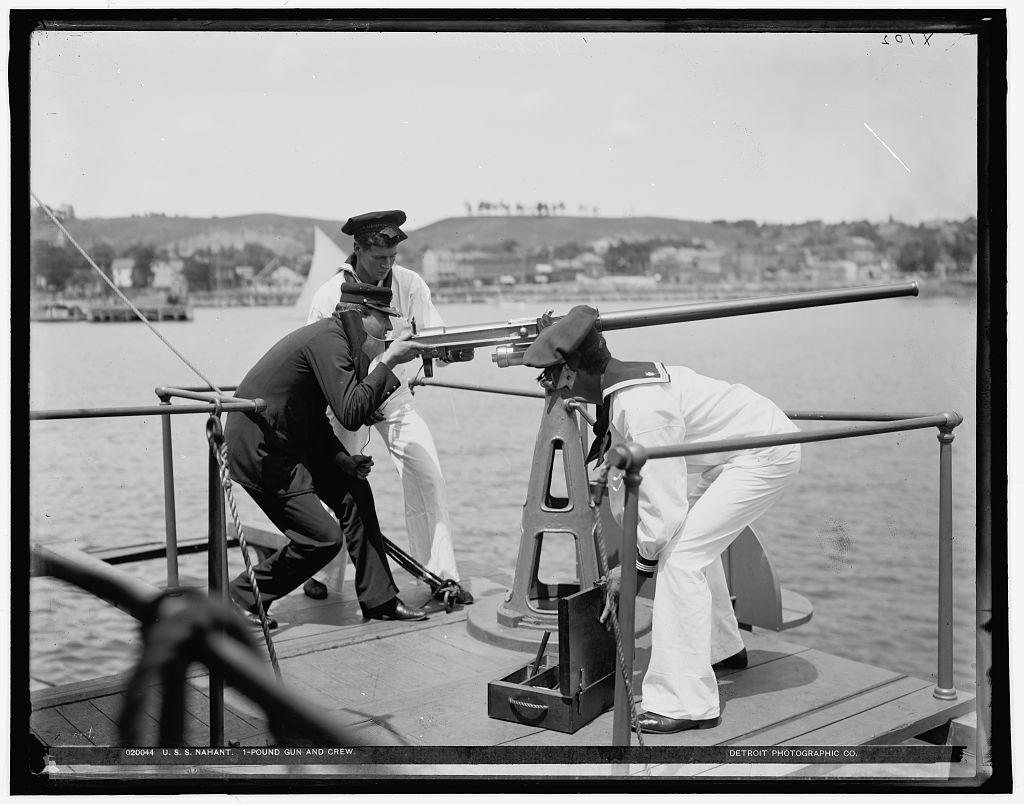
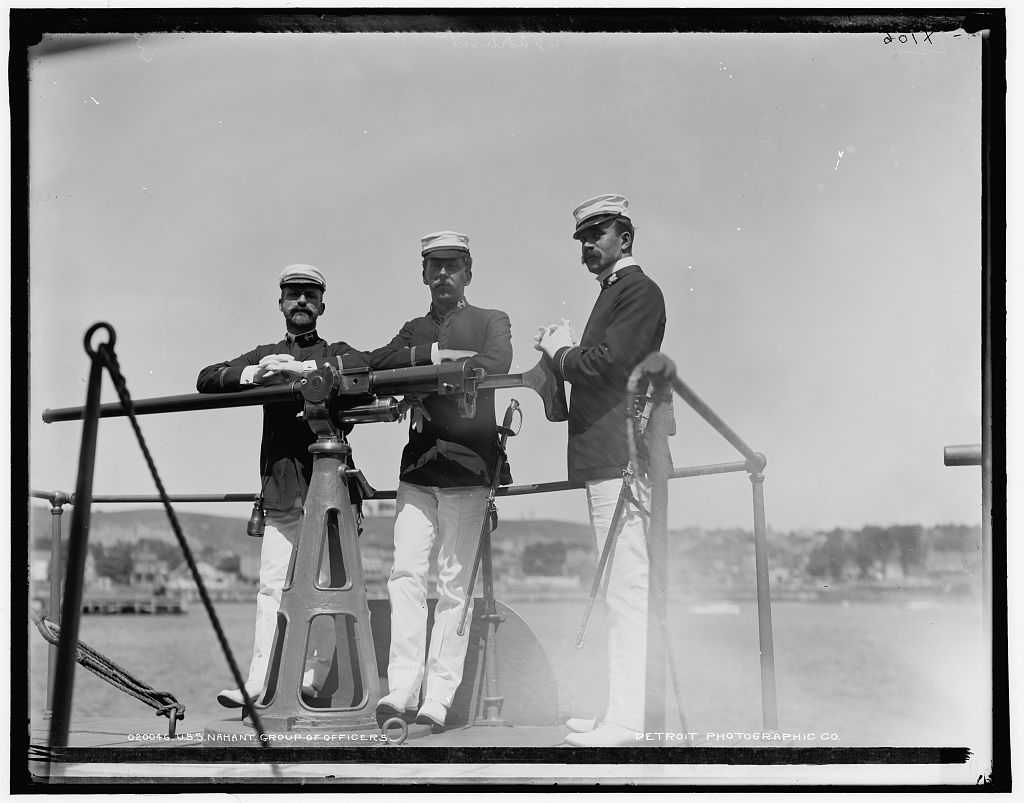
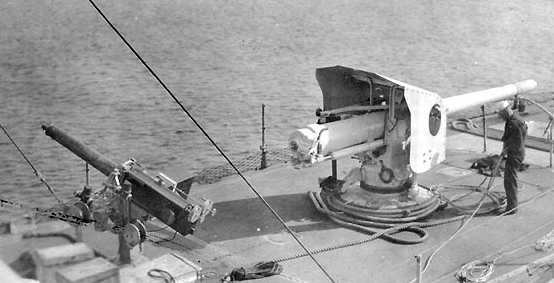
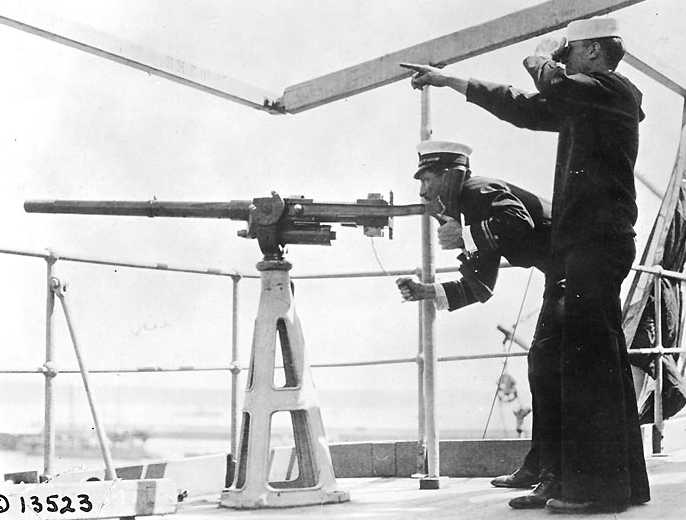
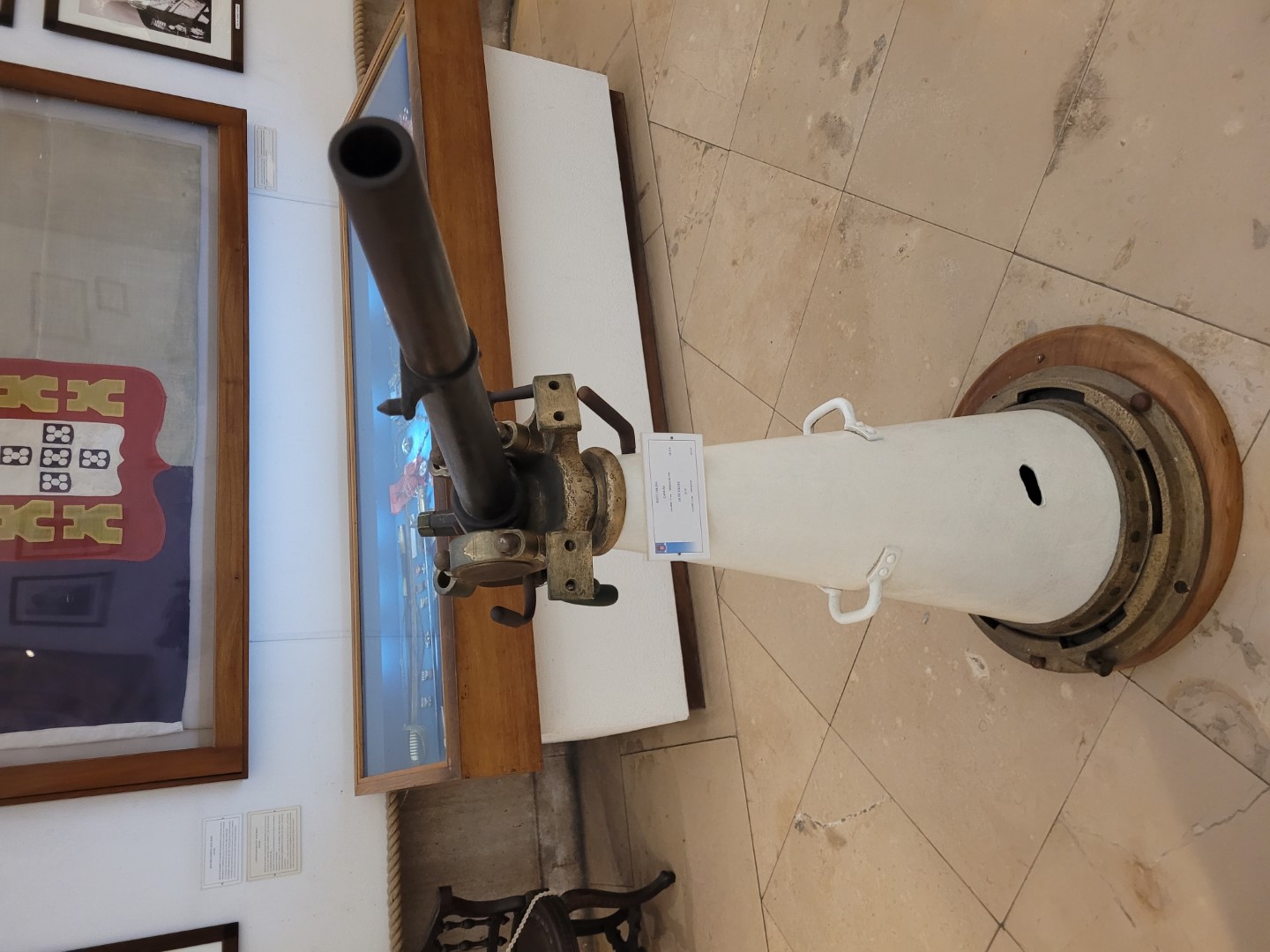
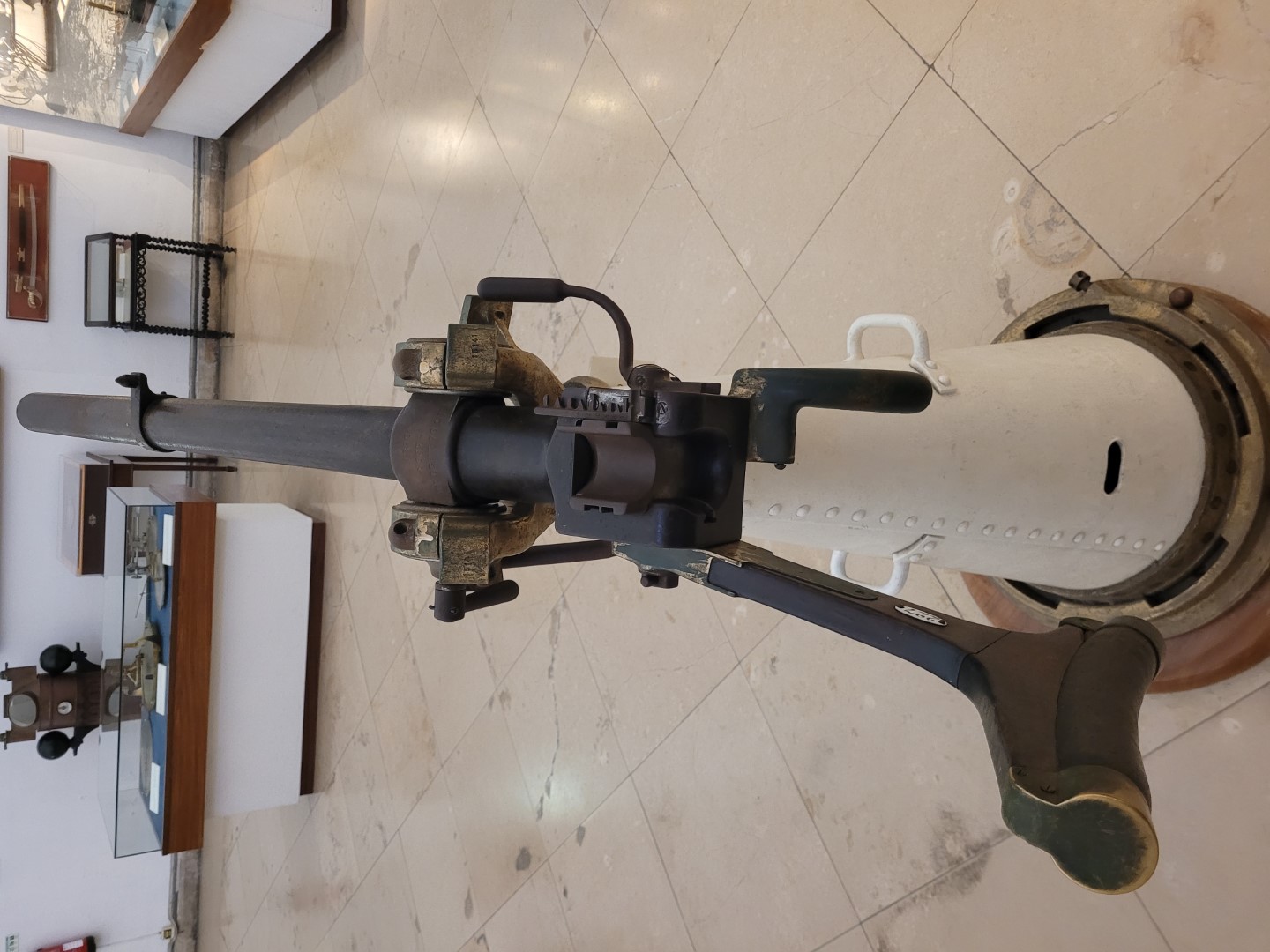
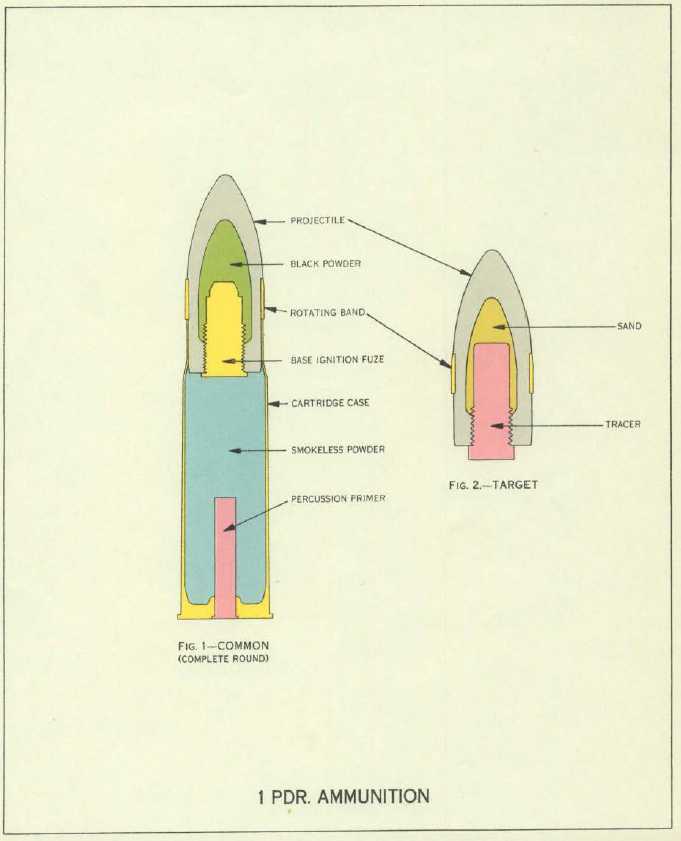
"Naval Weapons of World War Two" by John Campbell
"US Naval Weapons" by Norman Friedman
"A Treatise on Rifling of Guns" by Carl F. Jeansén
---
"Range and Ballistic Tables 1935" by U.S. Department of Ordnance and Gunnery
"Ammunition: Instructions for the Naval Service: Ordnance Pamphlet 4 - May 1943" by Department of the Navy
"U.S. Explosive Ordnance: Ordnance Pamphlet 1664 - May 1947" by Department of the Navy
---
United States Naval Guns: Marks and Modifications: Service Guns - OP 127 (1916 edition) at Gene Slover's Navy Pages
---
Special help from Leo Fischer
"No matter what shells are fired in oyster wars, the resource always loses", article from Bay Journal Vol 13 - Number 1 of March 2003
15 August 2008 - Benchmark
14 January 2011 - Added data reference. Added cutaway sketch
18 June 2020 - Converted to HTML 5 format
18 December 2022 - Added photographs of 1-pdr. at Museu de Marinha
